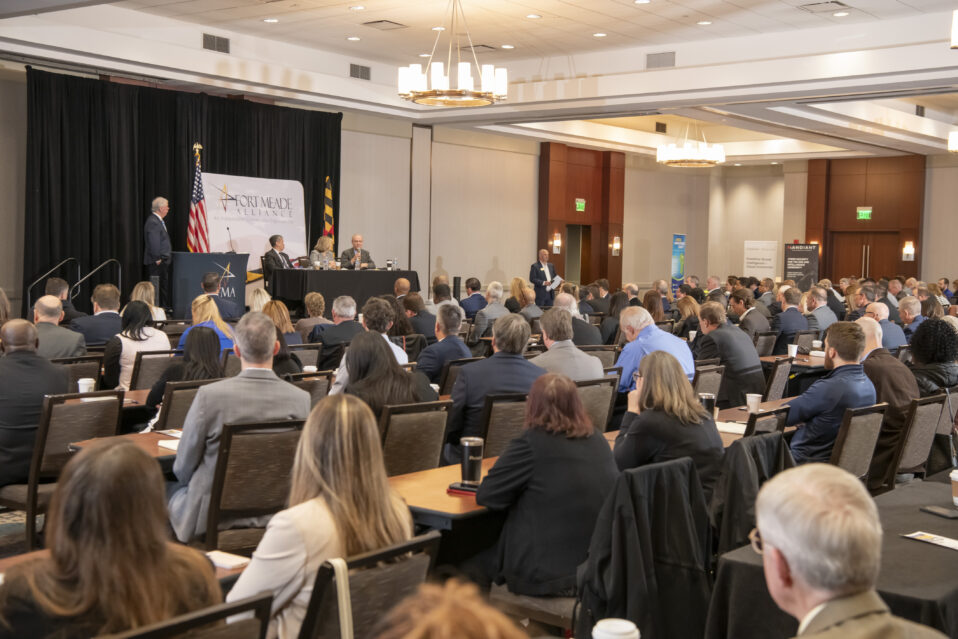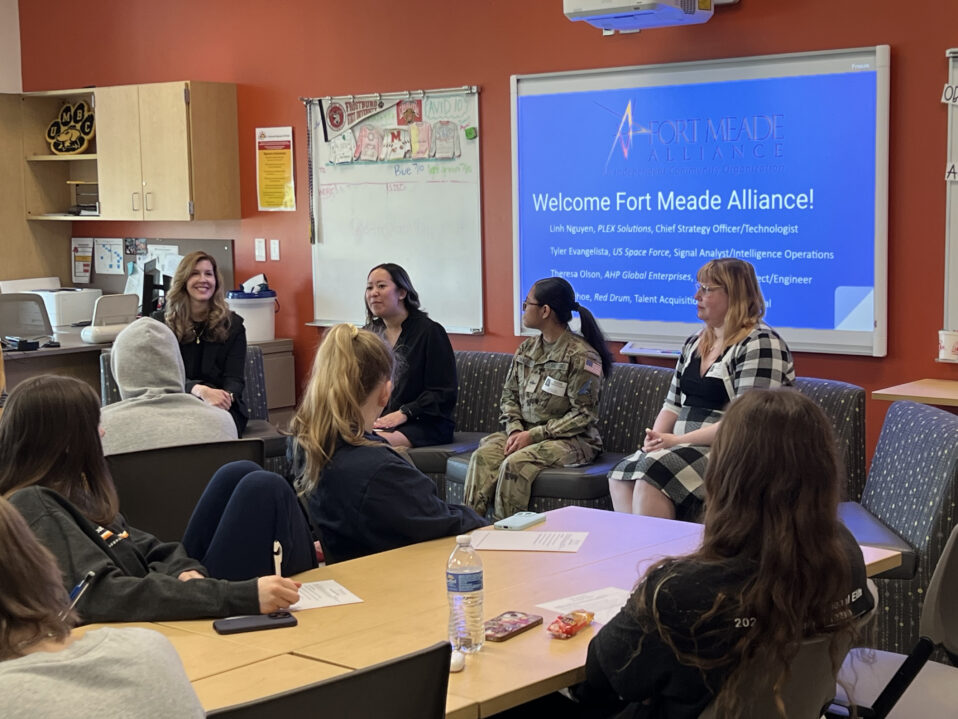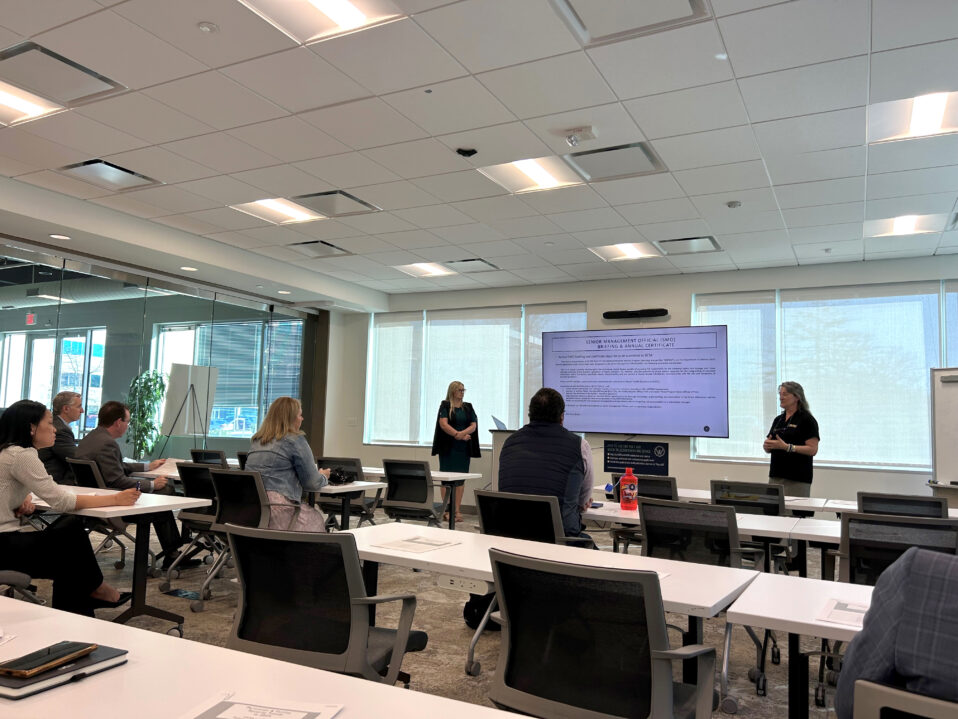 If Fort Meade agencies, commands and contractors can find ways to partner with small, non-traditional, highly innovative companies, Maryland can become the epicenter of cyber innovation.
If Fort Meade agencies, commands and contractors can find ways to partner with small, non-traditional, highly innovative companies, Maryland can become the epicenter of cyber innovation.
That was the challenge — and goal — presented to attendees at the FMA’s 7th Annual Industry Day by Teresa Shea, Former Executive Vice President of Technology for In-Q-Tel, Inc. and Former NSA Director of Signals Intelligence.
In her keynote speech, Shea said contractors’ ability to bring emerging technologies and innovative solutions into America’s cyber operations is essential to national security.
“I hope nobody in this room doubts that we are in a fight because we are in a fight … and we’re losing that fight,” she said. “I think we are eroding and we need to change how we do our business to get ahead.”
On its own, government doesn’t have sufficient research and development capacity to match current investment by the private sector in creating leading edge technologies.
“There was a time when the U.S. government was the epicenter of technical innovation in this country,” Shea said. “In post World War II, during the Cold War and the space race, massive R&D investment from the government drove countless innovations,” including ARPANET and the Global Positioning System.
Federal spending on research and development, however, has fallen from 12 percent of the GDP in the 1960s to just 3 percent currently.
“The government moved to the back of the bus in terms of driving technical innovation,” she said. “You can’t drive from the back of the bus.”
Meanwhile, corporate investment in R&D has experienced a profound change in recent decades. Rather than supporting R&D divisions, most large corporations have outsourced their R&D. By embracing the venture capital model, corporations have acquired their new technologies by making strategic investments.
Those two shifts in R&D in America have created a challenge for intelligence and defense organizations that need to employ leading technologies, Shea said. “I’m not just talking about those technologies that are already sitting on the shelf. I’m talking about those advanced technologies that are emerging and that can be applied, if tailored, to all aspects of our mission.”
To bring those emerging technologies into government contracts, integrators need to access the innovations of small, R&D firms. And they can’t do it by waiting for those firms to mature, expand, obtain clearances and fit the mold of a government contractor, Shea said.

“We need to stop wasting our time trying to teach these small tech startups to become government contractors,” she said.
Instead, integrators need to adjust their teaming practices to include those R&D companies, she said.
“It’s not so simple when you are talking about bringing these non-traditional startups onto your team. The process is very difficult to enter this market,” Shea said. “First, you are working with people who are not cleared while trying to communicate a classified government requirement. Second, the integrator and the startup must determine a value-add and revenue stream from the startup, especially if the government is buying only level of effort and not an outcome. And third, there needs to be a means within specific contracts for the integrator and the startup to present these relevant technology applications to the government and the government to somehow acquire them.”
Mastering those challenges could produce multiple benefits. In addition to bringing emerging technologies to government contracts and advancing national security missions, it could turn Maryland into the epicenter of cyber innovation, Shea said.
Similar efforts elsewhere have produced striking results. The NSA’s counterpart in Israel has spun off 1,000 cyber security companies. The U.K.’s National Cyber Security Center created an accelerator program that is currently supporting rapidly emerging cyber companies. In the U.S., In-Q-Tel has become a leading driver of investment and advancement in emerging technology companies.
A not-for-profit corporation, In-Q-Tel “is charged to perform as a strategic investor on behalf of the IC and the DoD for the benefit of solving the hardest problems that we can’t solve ourselves,” Shea said.
Today, In-Q-Tel ranks as the second most prolific investor in tech companies, right behind Google Ventures. In addition, “for every dollar that In-Q-Tel invests, we are leveraging about $11 in venture investment,” Shea said.
“Do whatever you can to encourage the tech startup culture here in this region,” Shea urged Industry Day attendees. “We need to learn from them and bring their innovative methods and practices, their speed and agility here, make their ways our ways, and transform how you support your customers.”



